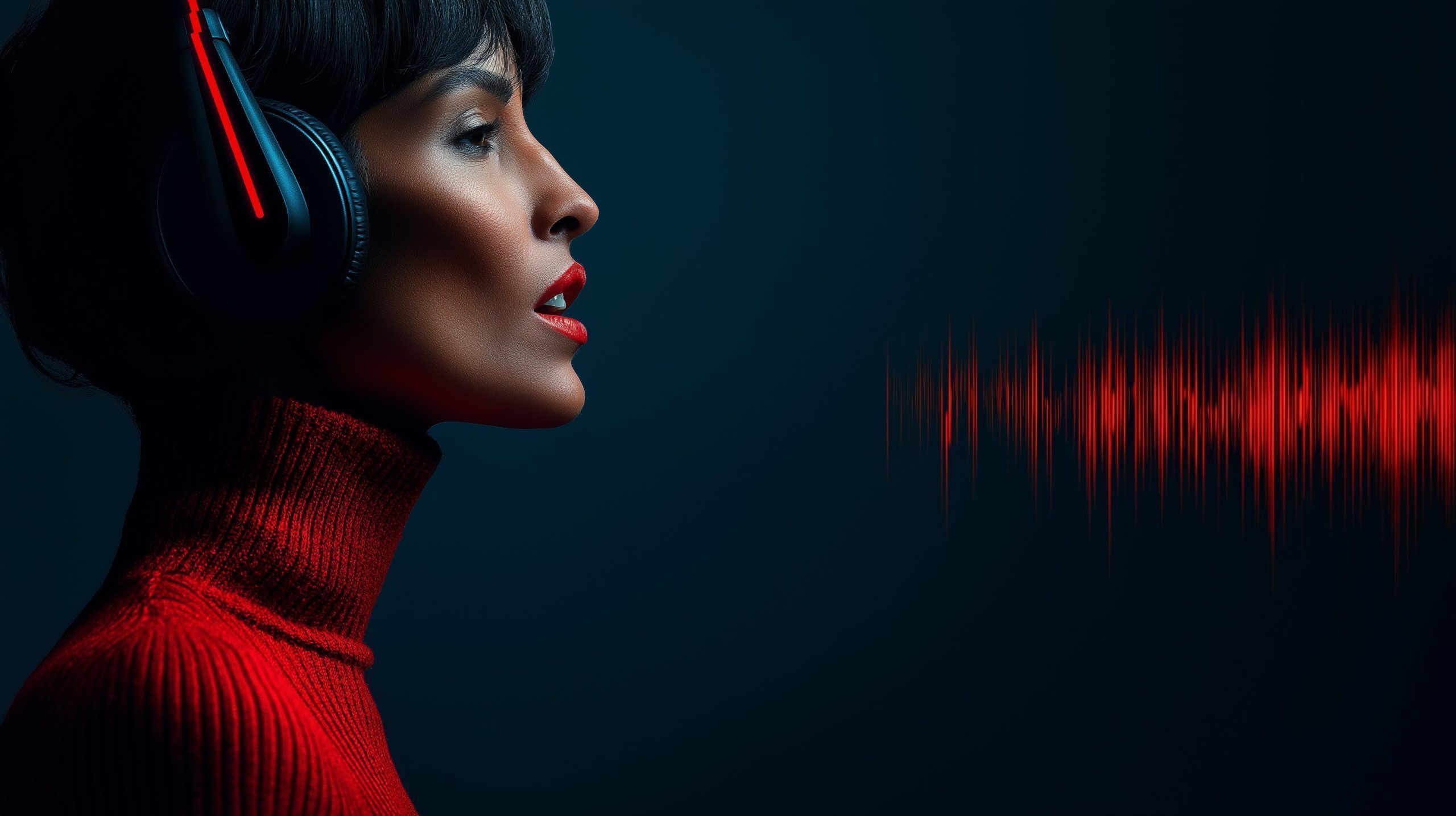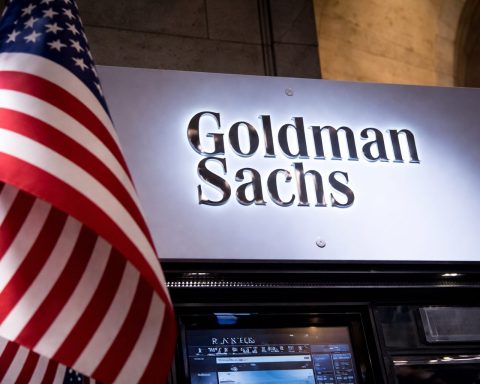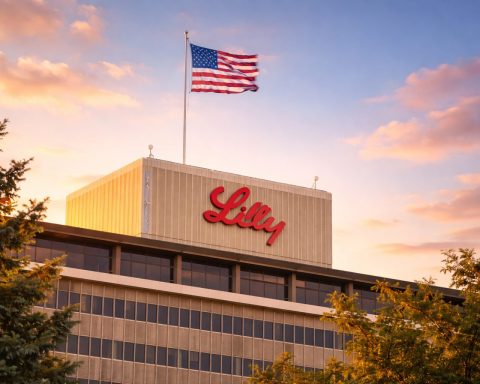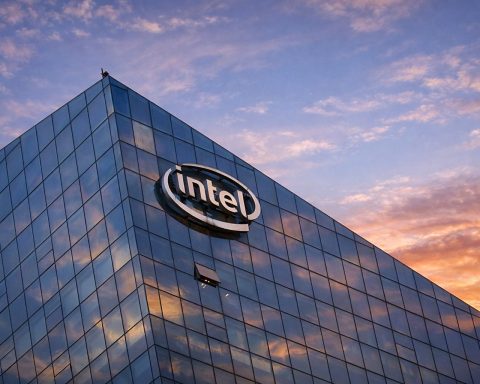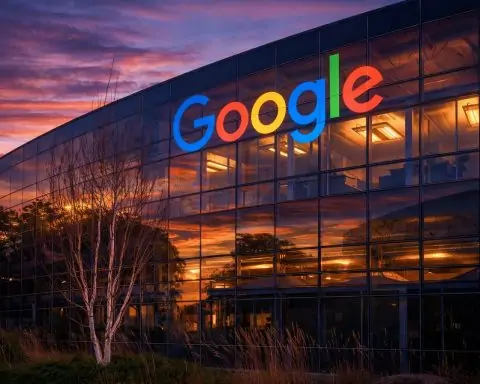- In early 2025, ElevenLabs cloned Alain Dorval’s voice for the Armor (aka Armored) trailer without clear consent, triggering backlash and a withdrawal with the family retaining veto power.
- The proposed US NO FAKES Act would criminalize generating or using someone’s voice via AI without consent and is supported by SAG-AFTRA to provide actors legal recourse.
- Industry sources estimate AI voice cloning could reduce voice-acting jobs by 30–50% in the next decade.
- ElevenLabs offers 300+ voices in 70+ languages, with a free tier around 10,000 characters per month and paid plans from $5 per month for about 30 minutes of audio.
- Murf.ai provides 200+ voices in 20 languages, an editor for pitch and timing, and plans around $19–$25 per month with a free trial of about 10 minutes.
- LOVO AI (Genny) features 500+ voices in 100+ languages, 30+ emotional tones, unlimited voice cloning in the Pro tier, a 14-day free trial, and Pro around $24 per month.
- Resemble AI enables custom voice cloning from as little as 5 minutes of audio and charges about $0.006 per second of generated speech.
- Descript Overdub lets users clone their own voice with explicit consent and is included in Descript’s subscription, with built-in ethics safeguards.
- Coqui TTS is an open-source toolkit with pre-trained models for about 15 languages, allowing you to train your own voice and run self-hosted deployments for free.
- Tortoise-TTS is an open-source project renowned for extremely natural cadence but slow generation and heavy computation, released under the MIT license.
Introduction: The Rise of AI Voice-Over Artists
In 2025, artificial intelligence is dramatically reshaping the voice acting industry. From Hollywood movie trailers to YouTube videos and radio broadcasts, AI-generated voices are increasingly realistic – and increasingly common. In one recent example, a film trailer sparked outrage by cloning the voice of a deceased actor without full consent, prompting public backlash and debate [1] [2]. At the same time, major tech firms and startups have unveiled AI voice-over tools so lifelike that many listeners can’t tell the difference [3] [4]. This report dives deep into the current state of AI voice-over technology: the leading tools (commercial, enterprise, and open-source), how they compare, expert opinions on their impact, ethical and legal controversies, and real-world examples of AI voices being used across film, gaming, advertising, e-learning and more.
Major AI Voice-Over Tools in 2025
AI voice generators have advanced rapidly, producing speech nearly indistinguishable from human voices. Below is a broad survey of major AI voice-over solutions available today, from user-friendly commercial apps to enterprise cloud services and open-source projects:
- ElevenLabs (Commercial): A popular AI voice platform known for highly realistic voices and voice cloning. ElevenLabs offers a library of hundreds of voices and supports over 70 languages with its text-to-speech and dubbing features [5] [6]. It allows users to create custom voices or clone a voice from samples, producing speech with convincing tone and emotion. ElevenLabs has a free tier (~10,000 characters per month) and paid plans starting at $5/month (about 30 minutes of audio) [7] [8]. It’s widely used for content creation on YouTube, audiobooks, and even marketing campaigns – for example, Nike cloned NBA star Luka Dončić’s voice for a shoe ad using ElevenLabs [9] [10].
- Murf.ai (Commercial): A synthetic voice-over studio offering 200+ voices in 20 languages with a focus on expressive narration [11]. Murf provides an editor to adjust pitch, emphasis, and timing, and it supports limited voice cloning. It integrates with tools like PowerPoint and has an API, making it popular for corporate training videos, presentations, and explainer videos. Pricing starts around $19–$25/month for individual plans [12], with a free trial (usually ~10 minutes of voice generation).
- LOVO AI (Genny) – Commercial: LOVO (rebranded as Genny) offers 500+ voices across 100+ languages and a suite of AI media tools [13]. It supports a wide range of emotions (30+ emotional tones) and unlimited voice cloning in its Pro tier [14]. Uniquely, LOVO includes a video editor and AI script writer, useful for creators making videos with AI voices. It typically has a free trial (e.g. 14 days) and then subscription plans (~$24/month for Pro) [15]. Ideal use cases include marketing content, animated videos, and localization (dubbing content into multiple languages with the same voice).
- Play.ht (Commercial): A text-to-speech platform known for high-quality voice cloning and large character limits for synthesis [16]. Play.ht offers lifelike voices in various accents and languages, often used for podcasts, audiobooks, and long-form content. It provides a generous word limit on higher plans and a cloning feature where users can create a custom voice from samples. Pricing is around $30/month (billed annually) for creators [17], with a limited free plan for testing.
- Resemble AI (Commercial/Enterprise): A voice AI service specializing in custom voice cloning. Resemble can create an AI voice model from a few minutes of audio and offers an API for integration. It supports real-time voice conversion and multilingual speech synthesis. Pricing is usage-based (approximately $0.006 per second of generated audio) [18]. Resemble is often used in interactive voice apps, games, and ads where a specific voice (like a brand voice or character voice) needs to be generated on demand.
- Descript Overdub (Commercial): Part of the Descript editing software, Overdub allows users to clone their own voice (with explicit consent) and generate new dialogue. It’s widely used by podcasters and video creators for quick edits or adding narration without re-recording. Overdub is included in Descript’s subscription and has a built-in ethics safeguard – it requires a user’s recorded consent to create a voice clone, aiming to prevent unauthorized use.
- Big Tech Cloud TTS (Enterprise): Tech giants offer robust text-to-speech for developers:
- Google Cloud Text-to-Speech: Provides 220+ voices in over 40 languages (using WaveNet and Neural2 voices). Offers fine control via SSML for pitch, speed, and pronunciation. Often used for IVR systems, voice assistants, and multimedia apps.
- Amazon Polly: Amazon’s TTS supports 29 languages with multiple voices (including neural voices) [19]. It’s pay-per-use (e.g. ~$16 per 1 million characters) and popular for applications like news reading apps and e-learning platforms.
- Microsoft Azure Cognitive Speech: One of the most extensive, with 330+ neural voices across 129 languages and dialects [20]. Microsoft’s service even offers emotional style voices and the ability to create a custom neural voice with enough training data. Used in enterprise settings for call centers, AI assistants, and international localization at scale.
- IBM Watson TTS: Supports ~13 languages with multiple voices, known for stability in enterprise use (though its voice quality has been surpassed by newer neural models from others). Often used in accessible tools and kiosks.
- Open-Source TTS Projects: For those with technical expertise, several open-source solutions allow custom AI voice generation:
- Coqui TTS (formerly Mozilla TTS): An open-source deep learning toolkit that can train AI voices given enough data. Out of the box it includes pre-trained models for ~10–20 languages [21], and developers can fine-tune it to new voices or languages. Coqui’s community has produced high-quality voice models (e.g., expressive English voices) freely available.
- Tortoise-TTS: A popular open-source project known for extremely realistic speech output (with proper pauses and intonation), albeit at a slow generation speed. It’s often used for research or low-volume needs due to its heavy computation requirements.
- Festival and Others: Older open-source TTS engines like Festival or eSpeak support many languages and are lightweight, but their output is robotic compared to modern neural voices. Newer neural frameworks (e.g. VITS, FastSpeech, VITS-based clones) are quickly improving open-source voice quality.
- Community Voice Clone Platforms: Projects like Uberduck or FakeYou allow users to share and use community-trained character voices (from cartoons, celebrity impressions, etc.). These are often used for fun and parody content (AI-generated memes, song covers) – e.g., Uberduck was used to mimic rappers’ voices in viral TikTok songs. However, quality varies and use of trademarked voices enters legal gray areas.
Comparing Leading AI Voice-Over Tools
With so many options, how do these AI voice tools stack up? Below is a comparative table of key players in AI voice generation, highlighting their features, language support, pricing, and best use cases:
| Tool & Type | Voices & Languages | Notable Features | Pricing Model | Ideal Use Cases |
|---|---|---|---|---|
| ElevenLabs (Commercial SaaS) | 300+ voices, 70+ languages (neural dubbing) [22] [23]. Community voice library + custom voices. | Ultra-realistic TTS with emotion; Voice Lab for cloning or designing new voices; “Instant Voice” cloning from ~5 min audio; API access; Multilingual dubbing (input one language, output another in same voice) [24] [25]. | Free tier (10k chars/month); Paid from $5/mo (30k chars) [26] [27]; higher tiers allow longer audio and more clones. | Content creation (YouTube, podcasts), audiobooks, marketing voiceovers. Also used in film ADR (dubbing lines in actor’s own voice) and prototypes. |
| Murf.ai (Commercial SaaS) | 200+ voices in 20 languages [28] (incl. various English accents, Spanish, Hindi, etc.). | Easy online studio with timeline editing; Emphasis & pacing control; Some voice cloning; Team collaboration features; Integrations (PowerPoint, etc.). | Free trial (10 mins); Paid plans ~$19–25/mo for individuals [29] (more for enterprise). | Corporate training, explainers, presentations; social media videos; cases needing quick voiceovers with background music, etc. Best when moderate realism is enough. |
| LOVO Genny (Commercial SaaS) | 500 voices, 100+ languages [30]; voices include multiple emotions/styles. | Emotion controls (30+ styles like cheerful, sad); Unlimited voice cloning (Pro tier); Built-in video editor and subtitle tool; AI script writer and image generator (one-stop content creation). | 14-day free trial; Pro ~$30/mo (billed annually) [31]; Enterprise custom pricing. | Marketing videos, animation, game development (temp voice tracks); multi-language localization of content using the same AI voice for consistency. |
| Resemble AI (Commercial API/Enterprise) | Dozens of base voices (English and select languages); can clone new voices from recordings. | Custom voice clone service (enterprise-grade cloning with as little as 5 minutes of audio); Real-time voice conversion (speak and it outputs cloned voice); Speech-to-speech and local deployment options. | Pay-as-you-go (approx $0.006 per second audio) [32]; custom enterprise licenses for unlimited use. | Advertising (brand voices), interactive voice apps, games (personalized NPC voices), call center avatars. Great when a specific voice identity is needed programmatically. |
| Amazon Polly (Cloud API) | ~60 voices in 29 languages + dialects [33] (incl. multiple English variants, Spanish, Mandarin, Arabic, etc.). | Scalable cloud TTS with SSML support; offers Neural and Standard voices; some are bilingual (e.g. English/Spanish). Can adjust timbre (e.g. newscaster style). No cloning (only preset voices). | Pay-per-character (e.g. ~$16 per 1M chars for neural voice); free tier (5M chars for 12 months for new AWS users). | Automated news/article reading, voice for IoT devices, public announcement systems; any app that needs reliable multi-language narration without custom voice requirements. |
| Google Cloud TTS (Cloud API) | 220+ voices, 40+ languages (incl. WaveNet voices for many locales). | High-quality WaveNet models; supports Custom Voice (Cloud Build) with your data for enterprise; Fine control via SSML (pronunciations, pauses). Also supports voice tuning (e.g. speaking tone). | Pay-per-character (e.g. $16 per 1M chars WaveNet); free tier ~4M chars/month. | Voice assistants, IVR phone systems, translation apps; broad language needs. Developers who may later build a custom voice for brand consistency. |
| Microsoft Azure TTS (Cloud API) | 330+ voices, 129 languages/dialects [34] (one of the widest supports; includes regional variants). | Offers Neural “Style” voices that can express emotions (cheerful, sad, etc.) or speaking styles (news, customer service); Custom Neural Voice feature lets you train a unique voice (requires ~30 mins of recorded speech + approval for ethics). Has an edge (on-premises) deployment option. | Pay-per-character (roughly $16 per 1M chars); free tier (5M chars/month for 12 months). Custom voice involves additional costs and approval. | Global enterprises needing consistent voicing across many markets; accessibility tools (screen readers) thanks to many languages; any scenario requiring tailored voice persona (with custom voice). |
| Coqui TTS (Open Source) | Pre-trained models for ~15 languages; unlimited if you train your own (requires dataset). | Completely open-source toolkit – train your own voice model or use community models; Supports cloning a voice if you have recordings; Active community sharing models. Quality depends on training data (nearly human-like with enough data, but less plug-and-play). | Free (self-hosted; compute needed for training); some community models available to download. | Research and experimentation; projects with specific niche languages or voices where commercial support is absent; tech-savvy teams integrating TTS into custom applications without licensing fees. |
| Tortoise-TTS (Open Source) | English (primarily) – can mimic a specific speaker if trained/fine-tuned on them. | An open model acclaimed for extremely natural cadence and intonation. It captures pausing and “thinking” sounds for realism [35]. However, it’s computationally heavy and slow. Often used to generate short but high-fidelity clips. | Free to use (MIT license) – must run on powerful hardware (GPU). | Film and game prototyping (for small bits of dialogue where realism is key), or one-off voice cloning tasks by enthusiasts. Not practical for bulk use due to speed. |
Table: Comparison of prominent AI voice-over solutions, showing their language support, special features, pricing, and best-fit use cases. (Sources: Company info and reviews [36] [37])
As the table suggests, quality and capabilities vary across tools. The most realistic AI voices (e.g. ElevenLabs, Azure Neural) can convey emotion and subtle intonation, suitable even for entertainment content. Others trade some realism for scale or specialization – for instance, Amazon Polly and Google TTS easily handle many languages and high volume, making them ideal for automated systems, while open-source solutions offer flexibility and freedom at the cost of convenience. Crucially, voice cloning is a defining feature of modern platforms: several services let you create a digital copy of a real voice. This can be transformative for content creation, but it also raises serious questions about consent and misuse (as we explore later).
Industry Perspectives: Experts on AI Voices vs. Human Actors
The rise of AI-generated voices has sparked both excitement and fear within the voice acting community and beyond. Here are insights and quotes from voice actors, industry leaders, and experts on how synthetic voices are impacting their world:
- “It’s war for us.” – Patrick Kuban, French voice actor and union organizer, describes how dubbing artists feel about AI. Kuban helped launch the campaign “#TouchePasMaVF” (“Don’t touch my French version”) to fight AI voice replacements in France [38] [39]. With AI threatening the €3 billion global dubbing industry, Kuban and others are pushing for cultural protection laws to safeguard human voices.
- “If you steal my voice, you are stealing my identity.” – Daniele Giuliani, Italian voice actor (dubbed Jon Snow in Game of Thrones), warns that AI cloning of an actor’s voice without consent is a violation of personal identity [40] [41]. He successfully fought for contract clauses in Italy to prohibit unauthorised use of voices in AI training, a model now spreading to other countries.
- “Humans are able to bring… experience, trauma and emotion… All of the things that we as humans connect with.” – Tim Friedlander, U.S. voice actor and president of the National Association of Voice Actors (NAVA), emphasizes that subtle emotional truth is hard for AI to replicate [42] [43]. An AI voice might sound perfectly angry or happy, he notes, but it often lacks the genuine feeling behind the performance that a human actor contributes.
- AI Company View – Augmentation, Not Replacement: Alex Serdiuk, CEO of Respeecher, a top voice cloning firm, asserts that their technology is best used “to modify human voices rather than replace them.” He insists on keeping human actors in the loop: “You cannot tell text-to-speech exactly what emotion you need… human actors… are essential” for authentic performances [44] [45]. Respeecher’s approach is to have a voice actor record lines and then use AI to transform those into the target voice – maintaining human expressiveness while achieving the desired voiceprint. Serdiuk also stresses ethical use, saying Respeecher only works with full permission from the voice owner or their estate [46].
- “The core problem of ElevenLabs — and the generative-AI revolution writ large — is that there is no way for this technology to exist and not be misused.” – Charlie Warzel, technology writer, after exploring leading voice AI company ElevenLabs [47]. This sentiment is echoed by ElevenLabs’ own founders, who acknowledge it’s a “cat-and-mouse game” to prevent misuse [48]. ElevenLabs CEO Mati Staniszewski, an idealist about positive uses, has advocated for digital watermarking of AI-generated audio as the “true solution” to detect deepfakes [49] [50].
- Voice Actors Embracing AI: Not all performers are opposed. Anne Ganguzza, a veteran voice coach, initially had fears but now sees promise: companies working with SAG-AFTRA on AI indicates to her “promising” opportunities if done right [51]. Some voice actors have begun licensing their voices through union-vetted deals (more on those below) as a new income stream, calling it “lucrative passive income” for minimal work [52] [53]. The mindset is that AI can handle low-level narration while actors focus on high-skill performances.
- Hollywood Actors and AI: Even A-list actors are speaking up. The legendary Sir David Attenborough was “profoundly disturbed” to discover AI clones of his voice narrating fake news clips online [54] [55]. “Having spent a lifetime trying to speak truth… my identity is being stolen”, Attenborough said in protest [56] [57]. Similarly, actress Scarlett Johansson took legal action after an AI simulation of her voice surfaced; she argued that using her voice likeness without consent “stole [her] essence” [58] [59]. These reactions underscore how personal and irreplaceable voices are to performers – they are as much one’s signature as their face.
In sum, human voices carry a depth and authenticity developed over a lifetime – something experts say AI hasn’t fully mastered yet. However, many acknowledge that AI voices are here to stay. The consensus among forward-thinking professionals is that collaboration and control are key: use AI as a tool (for efficiency, localization, etc.) while preserving respect for the talent and rights of human voice actors.
Ethical, Economic, and Legal Concerns
The surge in AI voice cloning has raised complex ethical and legal questions. Chief among them: Who owns a voice, and what are the rules for using it? Here are the major concerns voiced by professionals and regulators:
- Unauthorized Voice Use & Consent: A person’s voice is deeply personal, yet AI can clone it from surprisingly little data. Voice actors worry about recordings of their performances being fed into AI without consent. In one high-profile case, voice actors discovered that lines from their past work were used to train AI models that could mimic them – effectively “stealing their soul” in the words of one actor. Contracts historically did not address voice reuse for AI, which has led to retroactive battles. For instance, the daughter of late French actor Alain Dorval (the longtime French voice of Sylvester Stallone) agreed to let ElevenLabs attempt an AI clone as a test – but was outraged when the company announced, prematurely, that the cloned voice would be used in a new Stallone film’s dub [60] [61]. She clarified that no final approval was given and her father “would never have approved” such use without strict quality control [62]. This Dorval incident (early 2025) became a flashpoint, with French media and fans reacting angrily when the AI-dubbed trailer for the film Armor (aka Armored) sounded off in quality [63] [64]. ElevenLabs quickly withdrew its announcement and affirmed the family retained veto power [65] [66]. The ethical question stands: does a person (or their family) own the rights to their voice? In Dorval’s case, the family had to assert those rights after the fact. Many argue that explicit permission and fair compensation must be the baseline for any voice cloning.
- Impact on Livelihoods: AI voice-over threatens to automate jobs that thousands rely on. Dubbing actors, narrators, and voice-over artists fear a wave of displacement. Unions estimate significant job losses – experts project 30–50% reduction in voice acting jobs in the next decade due to AI encroachment [67] [68]. Already, actors like India’s Sanket Mhatre (who dubs 70+ films a year into Hindi) report a decline in routine gigs – corporate videos, training narrations, IVR phone system prompts – as these are increasingly handled by AI voices [69]. While blockbuster roles and nuanced characters are safe for now, the bread-and-butter jobs that pay the bills are at risk. This raises economic concerns for performers, especially those early in their career or in smaller markets.
- Creative Quality and Authenticity: There’s an artistic concern that over-reliance on AI will result in bland performances. Acting is an art, and voice acting involves creative interpretation, improvisation, and human connection. AI voices, no matter how fluent, operate on patterns learned from training data; they lack true spontaneity or method acting. As one voice actor put it, “Voice acting is acting… AI delivers what it was trained on” [70]. It may miss cultural context or subtext, mispronounce slang, or fail to convey irony and humor properly [71]. For premium productions – a Pixar movie dub or a nuanced game character – this could flatten the storytelling. There’s also a risk of homogenization: if the same handful of AI voices get used everywhere, we lose the diversity of accents and styles human actors bring.
- Voice Ownership and Copyright: Legally, it’s uncharted territory whether a voice (timbre, style) can be owned or copyrighted. Performers see their voice as part of their persona – thus using it without permission veers into right-of-publicity and even privacy violations. In the U.S., the proposed NO FAKES Act aims to make it illegal to generate or use someone’s likeness or voice via AI without consent [72] [73]. This bipartisan bill, supported by SAG-AFTRA, the Motion Picture Association and major music groups, was introduced to address exactly these deepfake concerns. If it passes, it would give actors and artists legal recourse against unauthorized voice cloning. Additionally, contracts are evolving: new union contracts (SAG-AFTRA for film/TV in 2023, video games in 2025) include clauses that prohibit using a member’s voice to train AI or create new performances without negotiation [74] [75]. Essentially, if a studio wants to clone a union actor’s voice, they must get consent and likely pay for that use.
- Fraud and Misinformation: Beyond the voice acting industry, hyper-realistic AI voices pose risks of scams and deception. Lawmakers and consumer advocates have noted a rise in phone scams where criminals use AI-cloned voices of relatives to con people – for example, mimicking someone’s distressed child asking for money. Even the White House’s AI adviser warned that “voice cloning is the one thing that keeps [him] up at night” in terms of AI risks [76] [77]. Misinformation is another worry: A convincingly cloned voice of a politician or public figure could be used to create fake speeches or audio “evidence.” These scenarios raise the urgency for regulation and technology safeguards (like detection tools or watermarks). Some AI companies have voluntarily formed an AI Voice Act accord pledging not to abuse the tech in elections [78].
- Labor Rights and Fair Compensation: If an AI voice is used, how are human contributors compensated? Unions want to ensure that if, say, an actor’s AI voice performs in 10 languages, the actor should get paid appropriately for that extended use of their likeness. New deals are emerging: in 2024, SAG-AFTRA struck agreements with companies like Replica Studios and Narrativ to allow union actors to license their “digital voice replicas” for use in certain projects [79] [80]. These deals ensure actors are paid and have control. However, they were controversial – some voice actors felt blindsided, arguing the union made “surprise” agreements without full member input [81] [82]. This highlights a split in the community: some see licensing to AI as empowerment and extra income, others see it as a slippery slope undermining collective bargaining (why would a studio hire 10 actors if it can license 1 voice and clone it into 10?). The Video Game voice actors’ strike (2024–25) ended with a new contract explicitly requiring consent and credit for any AI-generated performances, plus the right to refuse AI use during strikes [83] [84]. Transparency (labeling AI-generated voices in credits) is also a demand, so audiences and actors know when AI is used.
In summary, the ethical consensus is that an actor’s voice should not be taken without consent – voices are essentially that actor’s intellectual property and livelihood. The industry is racing to establish rules and laws so that AI becomes a tool serving creators, not exploiting them. Clear attribution, permission, and compensation are emerging as key principles to make AI voice use fair and acceptable.
Recent Controversies and Policy Reactions
As AI voice tech proliferates, there have been a number of high-profile controversies, bans, and legal actions in the past two years. Staying up-to-date on these cases offers insight into how society is grappling with this technology. Here are some of the most notable recent developments:
- Movie Trailer Voice Cloning Backlash (2025): In mid-2025, a BBC News report drew attention to the Armor movie trailer that used an AI-generated voice of Alain Dorval (Stallone’s French dub actor who died in 2024) without clearly informing viewers [85]. The trailer’s release, intended as a tribute, was met with fan and media uproar once they realized the voice was synthetic [86]. Critics said it was ghoulish to mimic a beloved actor who could no longer consent. Within days, the studio pulled the AI-voiced trailer and replaced it with a traditional dub by a living actor, pending the family’s decision on the final film dub. This incident prompted France’s culture minister to condemn using a deceased actor’s voice without rigorous approval, and sparked calls in France to reinforce laws around “digital resurrection” of performers [87] [88].
- Voice Actors vs. AI Companies Lawsuit (2024): In May 2024, voiceover legends sued AI platforms for training on their past performances without permission [89]. While details were initially under seal, it’s understood that a group of prominent voice actors (including anime and game voices) targeted companies scraping audio from films/games to build AI models. This case, akin to authors suing AI writing models for using their books, is among the first to test how copyright and performance rights apply to AI training. It underscores the claim that a recorded performance is a creative work – using it to spawn new performances might infringe on the actor’s rights if done without consent.
- Japanese Voice Actors’ Campaign (2024): In Japan, home of a huge voice acting (seiyuu) industry, over 200 famous voice actors banded together in October 2024 for the “No More Unauthorized AI Generation” campaign [90]. They pledged not to let their voices be used for AI without contracts, and pushed studios and agencies to respect this. Given the cultural importance of voice actors in anime and gaming, some Japanese production companies even banned AI-generated voices in their projects to support talent and avoid fan backlash. This is a notable example of an industry drawing a hard line on deepfakes.
- TikTok & Content Platforms Policies: After incidents of AI voice misuse (e.g. pranksters using TikTok’s text-to-speech with voices that sounded like actresses without permission, or deepfake celebrity voices reading inappropriate content), major platforms updated policies. TikTok settled a case in 2021 with voice actress Bev Standing (whose voice was used as TikTok’s TTS without her OK) by licensing her voice going forward. By 2023, TikTok and others introduced rules banning deepfake audio of private individuals and unwitting public figures in content, especially if used for harassment or fraud. Enforcement remains challenging, though, as countless AI voice filters exist.
- Government and Regulator Actions: Regulatory bodies have started addressing AI voice tech. Besides the U.S. NO FAKES Act, the European Union’s AI Act (expected to be implemented by 2025–26) includes provisions requiring AI-generated content (including audio) to be clearly disclosed as such, especially if it imitates real people. Some countries (e.g. China) already mandate that deepfake audio or video be watermarked or identified to users, under penalty of law, to combat misinformation. Meanwhile, the U.S. FTC has warned AI firms that misleading consumers with AI voices (for example, fake “human” telemarketing calls) could be seen as fraud. We’re likely to see more laws catching up, given incidents like a deepfake call that nearly scammed a bank out of $35 million by imitating a CEO’s voice [91] [92].
- Actor and Union Strikes (2023): The Hollywood writers’ and actors’ strikes of 2023 famously featured AI as a central issue. On the actors’ side (SAG-AFTRA), concerns about scanning background actors to create digital doubles got most headlines, but voice cloning was also on the agenda. The eventual deal (for film/TV) reportedly established that studios cannot use an actor’s voice or likeness to create new performances without a new contract or payment. SAG-AFTRA’s president Fran Drescher noted the agreement made “important progress around AI protections” [93] [94]. However, given technology’s pace, SAG-AFTRA is continually negotiating and issuing guidelines – including the above-mentioned agreements enabling actors to opt-in to AI licensing deals rather than be exploited without benefit [95] [96].
Overall, 2024–2025 has been a period of rapid change and reaction. For every exciting use of AI voices, there seems to be a cautionary tale or backlash highlighting the need for rules. The controversies have spurred a clearer message from professionals: “AI is here, but it must be consensual and transparent.”
AI Voices in Action: Use Cases Across Industries
Despite the controversies, AI voice-over technology is being eagerly adopted in various fields. Here are some real-world examples of how synthetic voices are already being used across different industries:
- Film & TV Production: Hollywood has cautiously explored AI voices in high-profile projects, mainly to solve practical problems:
- Dubbing & Dialogue Replacement: In Top Gun: Maverick (2022), Val Kilmer – who lost his voice to throat cancer – had his voice digitally recreated by an AI company (Sonantic) so that his character “Iceman” could speak again on-screen [97] [98]. The AI model, trained on old recordings, was approved by Kilmer and delivered an emotional moment that otherwise wouldn’t exist. Similarly, Lucasfilm used Respeecher to reproduce young Luke Skywalker’s voice for The Mandalorian and The Book of Boba Fett (since actor Mark Hamill’s 70-year-old voice no longer sounds 30) [99]. And the iconic Darth Vader voice in the 2022 Obi-Wan Kenobi series was AI-generated (with James Earl Jones’s blessing) to match his 1970s vocal tone. These examples show AI can extend actors’ abilities – letting older or deceased actors “perform” new lines.
- Trailers and Marketing: The voice-over in movie trailers – those classic deep voices – may soon be AI domain. In fact, the BBC report about AI in trailers noted that studios are testing AI voices to quickly generate trailer narration in multiple languages, or to imitate an unavailable actor’s voice for a promo [100]. One sci-fi film trailer in 2025 even used an AI voice with a “gravelly veteran narrator” style, saving the studio time and money in recording sessions. However, as seen, doing so with a specific actor’s voice (like Dorval/Stallone) without clarity can backfire. Still, marketing teams are eyeing AI as a way to get around actor schedule conflicts and localize trailers faster.
- Video Games: The game industry, with its huge demand for dialogue, is experimenting with AI voices:
- NPC Voices and Indie Games: A controversial example was the comedic shooter High on Life (2022), which used AI-generated voices for some minor characters and ambient chatter [101]. The creators said it filled small roles quickly, but many voice actors criticized the move (one well-known voice actor felt it took opportunities away from human actors for no good reason). In response to criticism, some studios pledged not to use AI for characters that could be cast with actors. Yet, AI remains attractive for non-critical roles: background characters, random crowd dialogue, or prototyping a game’s script before final casting.
- Resurrecting Voices: As mentioned, Cyberpunk 2077: Phantom Liberty (2023) used Respeecher to recreate the voice of a deceased voice actor for continuity in its Polish localization [102] [103]. The studio obtained permission from the family and combined another actor’s performance with the AI model to keep a beloved character’s voice consistent. The result was well-received and highlighted AI’s value in scenarios where a human replacement would feel jarring to fans.
- Dynamic Dialogue: AI voices offer the possibility of dynamic dialogue generation – imagine open-world games where NPCs can say anything (quest updates, player names) on the fly. Companies like Ubisoft have researched AI VO for barks (short NPC lines) to personalize game experiences. This is still emerging, but we may soon see games with AI-driven voice dialogue that changes based on player actions, something impractical to record fully with humans.
- Advertising and Commercials:Ad agencies have started using AI voices to tailor content to audiences:
- Personalized Ads: Instead of hiring multiple voice actors, advertisers can use a single AI voice and switch languages or accents easily. For example, a car commercial can be produced with the same AI voice speaking English for the US market, Spanish for Latin America, and Mandarin for China – maintaining a unified brand tone. In 2023, Coca-Cola experimented with an AI voice assistant in their radio ads that would address local store names dynamically – something impossible to scale with human recording.
- Celebrity Voice Endorsements: Some brands have flirted with cloning celebrity voices (with permission) to endorse products without scheduling studio time. The Atlantic reported that Nike cloned Luka Dončić’s voice to narrate a sneaker promo in multiple languages [104] [105]. The campaign benefited from Luka’s recognizable voice, even though the NBA star didn’t speak all those lines himself. We can expect more of this “celebrity voice licensing” in ads – though celebrities will likely charge a premium and insist on content approval to protect their image.
- Interactive Marketing: AI voices also power virtual brand ambassadors or AI DJs (more on that next) that can engage consumers one-on-one. For instance, an AI voice might converse with customers on a website or at a kiosk, providing a consistent branded voice experience.
- Broadcasting & Journalism: AI voices are entering broadcasting in roles like newsreading and radio hosting:
- AI Radio DJs: In mid-2023, a Portland radio station made headlines for debuting “AI Ashley,” a cloned voice of their human host used to DJ certain hours [106] [107]. Using a system called RadioGPT, the station generates scripts (e.g. music trivia, weather updates) and has AI Ashley read them on-air. The cloned voice sounds almost identical to the real host Ashley’s voice [108], and the station touted it as the world’s first AI DJ on FM radio. Listener reaction was mixed – some felt it was a neat tech trick, others said it “disrespected” human radio jobs [109]. The company positioned it as a hybrid approach: the real DJ focuses on community events and social media while her AI counterpart covers routine on-air segments [110]. This experiment is being watched closely by the broadcast industry, especially since major networks like iHeartMedia have invested in AI voices to potentially syndicate popular DJs across many stations simultaneously.
- News and Voiceover:* Media outlets are using AI voices for secondary content. Reuters and AP have tested AI narration for some articles and financial reports, allowing immediate audio versions without waiting for a narrator. The BBC has an experimental service where AI voices read text news in various accents so users can choose their preferred listening style. And some documentary filmmakers are toying with AI narration as a fallback if the desired narrator isn’t available (though many still prefer a human narrator for storytelling gravitas).
- Audiobooks & E-Learning: This is a huge area of uptake. In early 2023, Apple quietly launched AI-narrated audiobooks on Apple Books [111]. Under names like “Jackson” or “Madison” (which are not real people), Apple’s AI voices narrate romance and fiction titles from small publishers, offering a cheaper alternative to human narrators. Likewise, Google’s Play Books introduced auto-narration for public domain works. This triggered outcry from voice narrators who fear losing jobs, as audiobook narration was a growing gig economy. However, the quality of AI narration – while smooth – can lack the performance flair humans bring, so many high-profile authors still insist on human narrators for their works. In e-learning and corporate training, though, AI voices are often good enough. Companies are using tools like WellSaid or Microsoft’s Azure voices to narrate training modules in multiple languages, because it’s fast and easily updatable (change a line in the script, regenerate audio instantly). Educational videos, language learning apps, and even public service announcements are now frequently AI-voiced to save costs and time.
- Customer Service & Accessibility: AI voice-overs also shine in interactive and assistive roles:
- Call Centers: Instead of the old rigid IVR (“press 1 for hours”), some companies have AI voices coupled with AI dialogue systems to create more natural phone agents. These AI voices can be made friendly and on-brand. They handle basic inquiries (“What’s my account balance?”) before escalating to a human if needed. Because they’re synthetic, they can work 24/7 and even adjust style (more formal or more casual) based on customer preference.
- Voice Assistants: Assistants like Alexa, Siri, and Google Assistant largely use recorded voices today, but they are moving toward fully AI-generated voices for flexibility. Amazon’s Alexa has introduced options to speak in the voice of celebrities like Samuel L. Jackson (with permission and a licensing fee) – essentially a sanctioned voice clone for novelty. We will likely see more “voice skins” for assistants, possibly even user-customized ones (imagine your GPS or smart speaker talking in your favorite actor’s voice – legally authorized, of course).
- Accessibility: AI voices are a boon for people who rely on text-to-speech, such as the visually impaired or those with reading difficulties. The latest AI TTS can convey tone, which makes listening less monotonous. There are even projects helping individuals who lose their ability to speak (e.g., due to ALS) – by training an AI voice on their past recordings, patients can have a digital voice that sounds like them for communication. This human-centric use of AI voice tech is widely celebrated. Companies like ElevenLabs have cited it as a key positive use case, allowing people to “still communicate in their own voice after they lose the ability to speak” [112] [113].
Conclusion: A New Voice Landscape
AI voice-over technology has advanced to a revolutionary yet contentious stage. On one hand, it’s enabling amazing possibilities – resurrecting voices from the past, breaking language barriers by dubbing voices across tongues, and giving creators of all sizes access to professional-sounding narration. It’s speeding up production in film, TV, games, advertising, education, and more. As we’ve seen, synthetic voices are already co-hosting radio shows, starring in game worlds, and narrating audiobooks in 2025.
On the other hand, it’s prompting society to rethink notions of creativity, ownership, and authenticity. The voice acting community is fighting back to ensure they aren’t erased or exploited, and their push has led to new safeguards (from union rules to pending laws like the NO FAKES Act). Ethically, the world is converging on a principle: voices should not be cloned without consent, and audiences should ideally be informed when a voice is AI-generated.
For now, the sweet spot emerging is one of collaboration: using AI to assist and empower human voices, not outright replace them. For example, an actor might license their AI voice to earn income from ads in markets they can’t physically perform in, or a narrator might use an AI clone to quickly produce a draft and then personally refine the performance. Studios might use AI for minor roles or translation, while still casting actors for lead roles. This hybrid approach could expand work opportunities (as some optimistic actors believe) and preserve the “soul” of performances where it truly counts.
The technology will only get better. Experts predict that in the near future, it may become “impossible to tell” AI voices from real [114] [115]. When that day comes, having robust ethical practices and legal frameworks will be all the more important. Voice-over artists are not backing down – as their slogan says, “Don’t steal our voices.” The industry’s challenge is to integrate AI in a way that respects that plea.
One thing is certain: the voice-over landscape in 2025 and beyond will never be the same. We’re witnessing the rise of a new creative medium – the synthetic voice – and its story is being written now by technologists, artists, lawmakers, and listeners alike. Whether this revolution ultimately enhances human creativity or undermines it will depend on the choices we make today.
Sources: Recent news and expert commentary on AI voice technology and its impacts [116] [117] [118] [119], industry case studies [120] [121], and statements from voice actors and AI company leaders [122] [123].
References
1. journal.lu, 2. journal.lu, 3. www.movieguide.org, 4. www.movieguide.org, 5. www.theatlantic.com, 6. www.theatlantic.com, 7. zapier.com, 8. zapier.com, 9. www.theatlantic.com, 10. www.theatlantic.com, 11. nerdynav.com, 12. nerdynav.com, 13. nerdynav.com, 14. nerdynav.com, 15. nerdynav.com, 16. nerdynav.com, 17. nerdynav.com, 18. nerdynav.com, 19. milvus.io, 20. milvus.io, 21. milvus.io, 22. www.theatlantic.com, 23. zapier.com, 24. nerdynav.com, 25. nerdynav.com, 26. zapier.com, 27. zapier.com, 28. nerdynav.com, 29. nerdynav.com, 30. nerdynav.com, 31. nerdynav.com, 32. nerdynav.com, 33. milvus.io, 34. milvus.io, 35. www.theatlantic.com, 36. nerdynav.com, 37. milvus.io, 38. www.theguardian.com, 39. www.theguardian.com, 40. www.theguardian.com, 41. www.theguardian.com, 42. www.theguardian.com, 43. www.theguardian.com, 44. www.axios.com, 45. www.axios.com, 46. www.axios.com, 47. www.theatlantic.com, 48. www.businessinsider.com, 49. www.businessinsider.com, 50. www.businessinsider.com, 51. poweratwork.us, 52. poweratwork.us, 53. poweratwork.us, 54. www.movieguide.org, 55. www.movieguide.org, 56. www.movieguide.org, 57. www.movieguide.org, 58. www.linkedin.com, 59. www.movieguide.org, 60. www.independent.co.uk, 61. www.independent.co.uk, 62. www.independent.co.uk, 63. journal.lu, 64. journal.lu, 65. www.independent.co.uk, 66. www.independent.co.uk, 67. poweratwork.us, 68. poweratwork.us, 69. www.theguardian.com, 70. www.linkedin.com, 71. www.linkedin.com, 72. www.reuters.com, 73. www.reuters.com, 74. www.linkedin.com, 75. www.reuters.com, 76. www.businessinsider.com, 77. www.businessinsider.com, 78. www.businessinsider.com, 79. poweratwork.us, 80. poweratwork.us, 81. poweratwork.us, 82. poweratwork.us, 83. www.reuters.com, 84. www.reuters.com, 85. journal.lu, 86. journal.lu, 87. www.lawyer-monthly.com, 88. www.lawyer-monthly.com, 89. www.linkedin.com, 90. www.france24.com, 91. www.youtube.com, 92. www.youtube.com, 93. www.reuters.com, 94. www.reuters.com, 95. poweratwork.us, 96. poweratwork.us, 97. people.com, 98. people.com, 99. www.axios.com, 100. journal.lu, 101. gamerant.com, 102. www.axios.com, 103. www.axios.com, 104. www.theatlantic.com, 105. www.theatlantic.com, 106. www.businessinsider.com, 107. www.businessinsider.com, 108. www.businessinsider.com, 109. www.businessinsider.com, 110. www.businessinsider.com, 111. www.businessinsider.com, 112. www.businessinsider.com, 113. www.businessinsider.com, 114. www.movieguide.org, 115. www.movieguide.org, 116. www.theguardian.com, 117. www.businessinsider.com, 118. www.reuters.com, 119. www.businessinsider.com, 120. www.axios.com, 121. www.theatlantic.com, 122. www.theguardian.com, 123. www.axios.com
